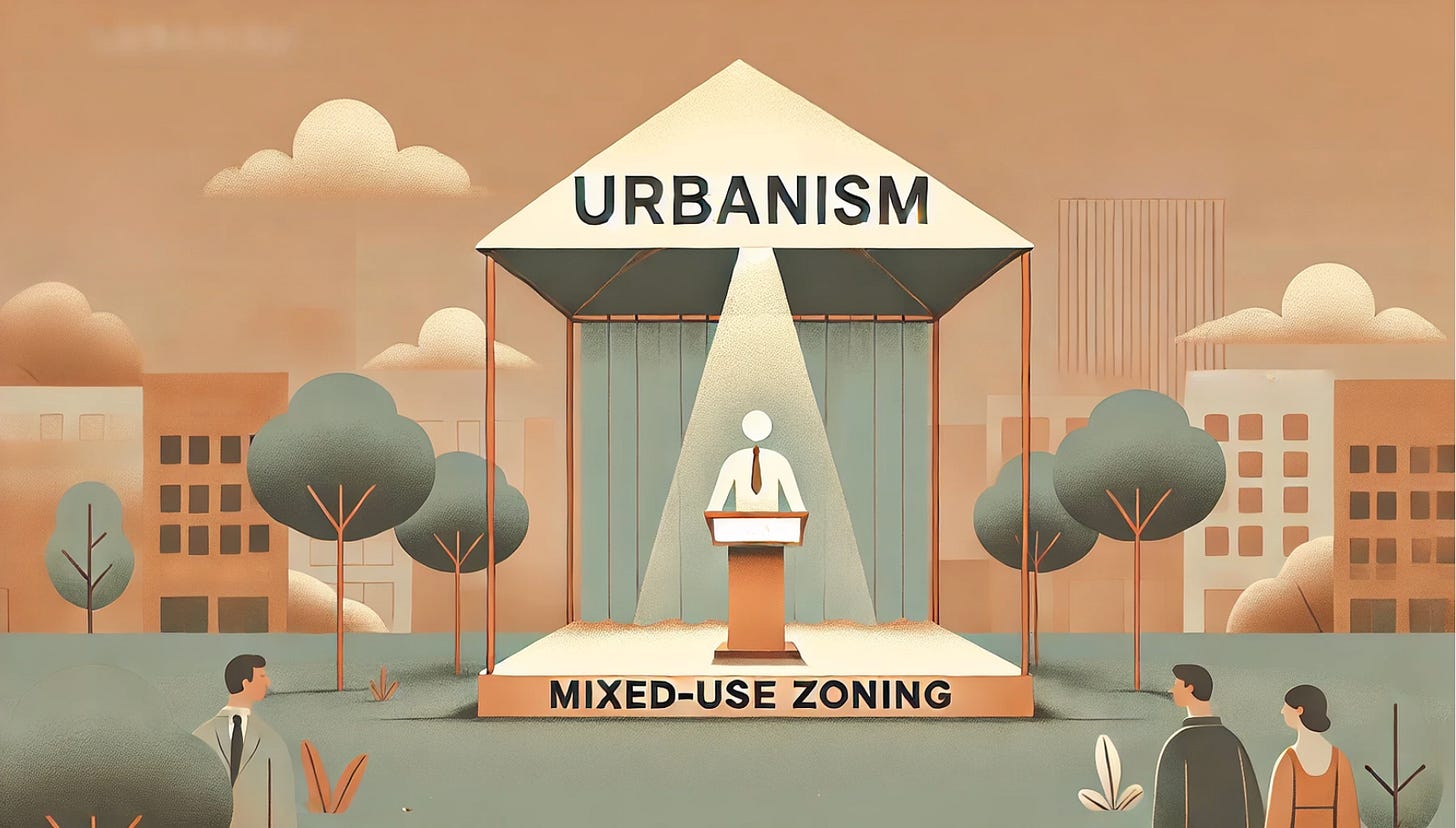Software & Hardware Pt. 2: Spotlighting Ideas
Pulling each idea into view so it can shine, and win, on its own.
This is the third piece in a series breaking down the elements of the Software & Hardware Framework.
If you’ve missed the first two articles in the series, you can catch up here:
Last week, we kicked off breaking down the six parts of the Software & Hardware Framework, starting with Part 1: Narrative. Urbanism is a set of ideas, but it is ultimately a story, and a compelling one worth inviting people into.
Part 2 circles back to the ideas. Urbanism is, in itself, an idea, but underneath the umbrella sits an entire collection of different solutions and policies that can improve different elements of the city, from housing to transportation and more.
Those ideas will only gain traction if they’re brought out from underneath the urbanism tent and given their own time in the sun.
Going back to the narrative/story metaphor, think of these different policies and ideas like characters. The specific ideas and policy goals of urbanism are characters in the larger story of the urbanism movement. Some are more central than others, but the movement gains power when we fully flesh out each of them, and subsequently showcase them.
Look at the Marvel cinematic universe as an example of what this looks like in action. Disney didn’t stop at the Avengers movies. They spun off everyone from Captain America, Iron Man, and Spiderman to Wanda, Loki, and Ant Ma, each getting their own show, movie or series of movies. Their own moment in the spotlight. Same for urbanism: each idea can be its own lead.
The Avengers universe (and story arc) gave each character and movie/series an overarching world to exist within, and that gave each movie or series (particularly those for the smaller characters) that much more credibility and attention upon release. But the popularity that each character had really came because they had their own story to tell, outside of (though not entirely detached from) the arc of the Avengers.
Doing this lets you play the law of averages. Disney/Marvel didn’t know which shows or movies would hit (even if they surely had a hunch). But by releasing content focused on so many different characters, they increased their chances that some would break through. They created a much larger luck surface area. And though some flopped, it’s been a ringing success overall.
We can do the same with the ideas of urbanism. Even while continuing to hammer on the broader story (our “Avengers movies”), we can also continue building out the stories of different characters (both big and small) in hopes that at least some of them catch on.
You can already see examples of this working all over, and why it matters: we’ve seen cities across the country begin embracing reform of parking requirements in recent years. Other cities are embracing upzoning around transit and single-stair reform. California even did a major rollback of CEQA in the past few weeks.
This happens because we let each idea live on its own instead of burying everything under one big omnibus manifesto. Real progress usually comes from a series of smaller victories. Giving ideas a fighting chance through focused attention is how we get urbanism adopted more broadly.
And this doesn’t mean abandoning advocacy for urbanism as a movement or pushing for the full vision. The work of spotlighting individual ideas sits within the bigger strategy, the one that champions progress from every angle. Think of it this way:
Narrative is the unifying banner. The story we’re inviting people into.
Idea Spotlight steps out from under that banner into “spinoff” stories for thigs like ADUs, zoning reform, parking minimums, and more, giving each their own moment to shine.
Urbanism in action (up next) looks to take those ideas and give people tangible examples they can fall in love with.
Next week: we take these ideas from spotlight to sidewalk. Taking stories and ideas and translating them into real places that sell the promise.




